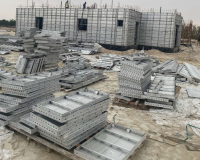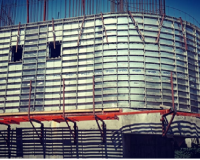Concrete shuttering, in the pouring is a major process of construction that involves creating a temporary mold to support the wet concrete until it hardens and supports its weight, frame, or glazing, Concrete shuttering can be made of wood or steel, aluminum and must have sufficient strength to support the weight of wet concrete. Once the concrete is jammed it can be removed.

Step-by-Step Guide to Setting Up Shuttering
Step 1 Area Preparation
Very first thing is to make ready the ground where the concrete shuttering base will be laid. Remove any debris, roots, or other organic material from the area.
Step 2: Marking the Area
Use string line or marking paint to mark out the area where the concrete will appear. To ensure the correct shape, ensure that the lines are seen and honed at the same time.
Step 3: Cutting and Joining the Boards: Measure and cut your shuttering board to the dimensions you have determined
And always double-check your measurements before cutting. Assemble the shading board into square or rectangular shapes as per the requirements of your project. Your measurement before cutting. Assemble the shading board into square or rectangular shapes as per the requirements of your project.
Step 4: Positioning and Pattern
By using Bubble level, be ensure that the top of the shading board is at exact level. This is of great importance because the concrete prepared at the outer edge of finished concrete surface.
Step 5: Protecting the Corners
When observing that the corners are at right angles, you can use corner braces or clamps. This will help keep the formwork in shape while pouring the concrete.
Step 6: Supporting the Shuttering
Depending on the size of your concrete base, you may need additional supports. Insert supporting stakes or props on the outside of the shuttering to prevent it from bowing out when filled with wet concrete. If it’s a large project, internal supports may also be necessary.
Step 7: Shuttering Oil Application
Before pouring the concrete, apply a layer of shuttering oil or a release agent. This ensures that once the concrete is set, the formwork can be easily removed without damaging the concrete.
Step 8: Final Inspection
Before Pouring concrete, do a final check:
- Is the formwork at the level?
- Are the dimensions correct?
- Are the supports robust enough to hold the weight of the concrete?
- Have you allowed for overhangs?
Conclusion: By following this step-by-step guide, you’re well on your way to mastering the art of shuttering, ensuring that your concrete projects are built to last.






